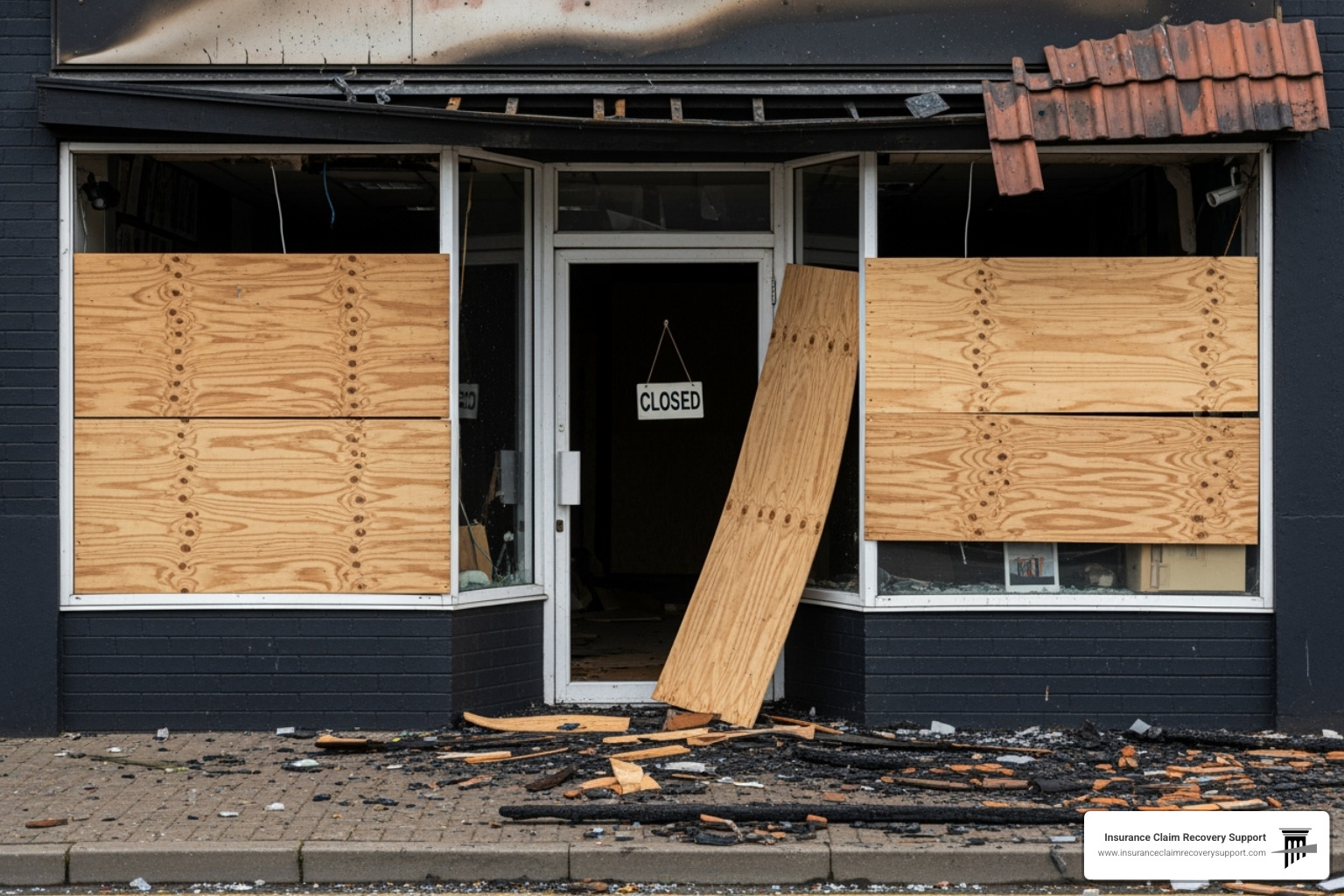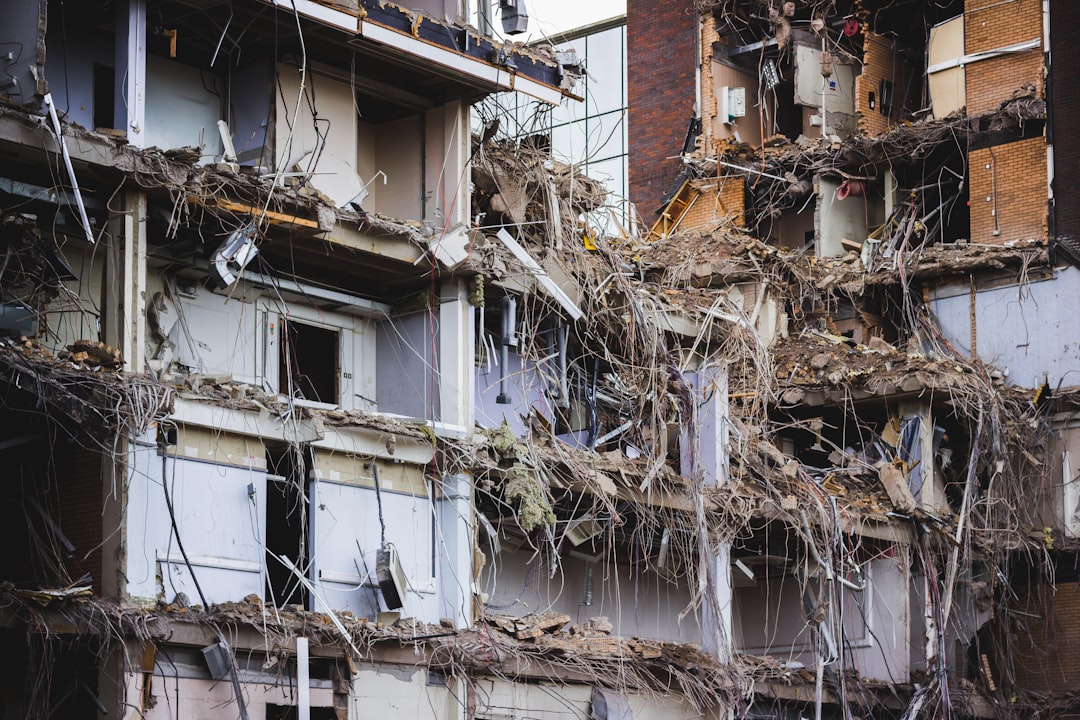Flood cleanup is a critical process that begins the moment waters recede, leaving behind a daunting mix of debris and damage. To efficiently tackle flood cleanup and reclaim your property, start by ensuring safety and documenting everything for potential insurance claims.
Here’s a quick checklist to get started:
- Ensure personal safety with proper gear
- Wait for official clearance to enter the property
- Document damage with photos and videos
- Secure necessary cleanup supplies
Flood damage can turn lives upside down, affecting walls, furniture, and even the hidden innards of buildings, like electrical systems and insulation. Prioritize safety by wearing protective gear such as rubber boots and gloves. Local officials must confirm that it’s safe to enter the environment.
As you prepare to dig deeper into each phase of recovery, I’m Scott Friedson, a public adjuster with significant experience in flood cleanup. I’ve helped steer the complexities of insurance claims and supported countless policyholders through this challenging situation effectively. Let’s explore how to reclaim your space safely and promptly.

Learn more about flood cleanup:
– San Antonio flood damage
– flood damage recovery
Assessing the Damage
Safety First
Before diving into flood cleanup, your first priority is safety. Floods can leave behind a hazardous environment. Personal Protective Equipment (PPE) is essential. Equip yourself with rubber boots, gloves, and safety goggles. If mold or bacteria are suspected, an N95 mask is a must.
Hazards to watch out for:
- Compromised structures: Walls or floors may no longer be stable.
- Contaminated water: Floodwaters often carry harmful bacteria.
- Electrical risks: Wet wiring poses a severe shock hazard.

Never enter your property until local authorities have deemed it safe. This clearance ensures that the structural integrity of your home is intact and that potential hazards, like gas leaks, have been addressed.
Documenting the Damage
Once safety is assured, the next step is documenting the damage. This documentation is crucial for insurance claims and future repairs.
Here’s how to do it effectively:
- Photos and Videos: Capture wide shots of entire rooms and close-ups of specific damages. Take multiple angles to ensure a comprehensive record.

-
Create an Inventory: List all damaged items, noting their value. Include structural damage, like walls and floors, and personal belongings.
-
Gather Pre-flood Evidence: If available, use pre-flood photos, videos, or receipts to substantiate your claims.
These records serve as irrefutable evidence when filing insurance claims. They help convey the extent of the damage and support your case for compensation.
In the chaotic aftermath of a flood, it’s easy to feel overwhelmed. However, by prioritizing safety and carefully documenting the damage, you lay a strong foundation for recovery. Your next steps will involve removing water, sorting debris, and beginning the cleaning process. Stay tuned as we guide you through these essential steps.
Essential Steps for Flood Cleanup
Once you’ve documented the damage, it’s time to tackle the flood cleanup. This process involves removing water, sorting debris, and thoroughly cleaning your property. Let’s break it down step-by-step.
Removing Standing Water
Standing water is a breeding ground for bacteria and mold. Start by removing it as soon as local authorities say it’s safe.
- Pumps: Use a water pump to remove large volumes of water. If you don’t have one, consider renting from a local hardware store.
- Wet/Dry Vacuums: These are great for smaller areas or leftover puddles. They can handle water and debris, making them versatile tools.
- Professional Help: For severe flooding, hiring professionals might be necessary. They have specialized equipment and expertise to safely and efficiently remove water.
Sorting and Disposing of Debris
After the water is gone, you’ll need to sort through the debris. This step is crucial for both safety and insurance purposes.
- Salvageable Items: Some items can be saved with proper cleaning. This includes non-porous materials like metal or certain plastics. Clean them thoroughly and let them dry completely.
- Non-Salvageable Items: Unfortunately, many items will need to be discarded. This includes anything that absorbs water, like mattresses, carpets, and upholstered furniture. These items can harbor mold and bacteria.
- Disposal Methods: Follow local guidelines for disposal. Some areas may have specific instructions for hazardous waste or large items.
Cleaning and Disinfecting
With water removed and debris sorted, it’s time to clean and disinfect your space. This helps prevent mold and ensures a safe environment.
- Detergents: Use a mild detergent to clean hard surfaces. This removes dirt and grime left by floodwaters.
- Disinfectants: After cleaning, apply a disinfectant to kill bacteria and mold spores. Make sure the area is well-ventilated during this process.
- Sanitizers: For added safety, especially in kitchens and bathrooms, use sanitizers on frequently touched surfaces.
By following these steps, you’ll make significant progress in your flood cleanup efforts. Removing water, sorting debris, and using the right cleaning methods are essential to restoring your home. Next, we’ll explore how to dry out your property effectively.
Drying Out Your Property
After the initial flood cleanup, drying your property is crucial. Moisture left in walls, floors, or furniture can lead to mold and mildew, which are health hazards. Here’s how to dry out your property effectively.
Effective Drying Techniques
Ventilation is key. If it’s safe, open all windows and doors to allow fresh air to circulate. This helps evaporate moisture trapped inside.
- Fans: Place fans throughout your home to boost airflow. They help move moist air out and dry air in. Even small fans can make a big difference.
- Heaters: In cooler weather, use heaters to warm up the air. Warm air holds more moisture, which speeds up drying. Make sure the area is well-ventilated to avoid overheating.
- Dehumidifiers: These are essential in areas with high humidity. They pull moisture from the air, helping dry out walls and floors faster. Position them in closed rooms for maximum efficiency.
Checking for Moisture
Once the drying process is underway, it’s important to check for lingering moisture. This ensures that materials are truly dry before you start repairs.
- Moisture Meters: These handy tools measure the moisture content in walls, floors, and other materials. Look for readings of 15% or less, which indicate dryness. You can find moisture meters at most hardware stores.
- Visual Inspection: Look for visible signs of moisture like water stains or damp spots. Also, pay attention to any musty odors, as they can indicate hidden moisture.
By using these drying techniques and regularly checking for moisture, you’ll significantly reduce the risk of mold and mildew. This step is crucial to ensure your home is safe and ready for the next phase of restoration.
Next, we’ll dive into mold and mildew prevention to keep your home healthy and secure.
Mold and Mildew Prevention
After a flood, mold and mildew can become silent invaders in your home. They thrive in damp spots and can start growing within 24 to 48 hours. Ignoring them can lead to health risks and further damage to your property. Here’s how to identify and prevent these pesky fungi.
Identifying Mold and Mildew
Signs of Mold: Mold often looks like black, green, or white spots on walls, ceilings, or floors. It can also appear fuzzy or slimy. A musty smell is a telltale sign that mold might be lurking nearby.
Health Symptoms: Exposure to mold can cause sneezing, coughing, eye irritation, and even asthma attacks. If you or your family experience these symptoms, it’s time to inspect for mold.
Inspection: Start by checking damp areas like basements, bathrooms, and attics. Use a flashlight to spot mold in dark corners or behind furniture. If you’re unsure, consider hiring a professional to conduct a thorough inspection.
Preventative Measures
Speedy Drying: The faster you dry out wet areas, the less chance mold has to grow. Use fans, dehumidifiers, and open windows to promote airflow and reduce moisture.
Cleaning: For non-porous surfaces like tiles and metal, clean with a solution of 1 cup of bleach to 5 gallons of water. For areas with visible mold, increase the bleach concentration to 1 cup per gallon of water. Always wear gloves and an N95 mask when cleaning to protect yourself.
Professional Services: If mold covers a large area (more than 10 square feet), it’s best to call in experts. Certified mold remediation professionals have the tools and knowledge to safely remove mold and prevent it from returning.
Regular Checks: After the initial cleanup, keep an eye on humidity levels in your home. Use a humidity meter to ensure levels stay below 60%. Regularly inspect vulnerable areas for new signs of mold.
By taking these steps, you can effectively prevent mold and mildew from becoming a problem. This proactive approach not only protects your property but also ensures a healthy environment for you and your family.
Next, we’ll explore the repair and restoration phase to bring your home back to its former glory.
Repair and Restoration
Once you’ve tackled the immediate threats of mold and mildew, it’s time to move on to repair and restoration. This phase is where your home begins its journey back to normalcy. Let’s explore the essential areas: structural repairs, HVAC systems, and handling personal belongings.
Structural Repairs
Floods can leave behind significant damage to the walls, floors, and foundation of your home.
Walls: Start by removing damaged drywall and insulation. These materials act like sponges, soaking up water and staying damp for a long time. Replace them with new, dry materials to prevent future issues.
Floors: Check for warping or buckling. Solid wood floors might be salvageable if dried properly, but laminate or particle board often need replacement. Tile and concrete are usually more resilient but should be cleaned and disinfected thoroughly.
Foundation: Inspect for cracks or shifts. While minor cracks can be sealed, significant damage may require professional help to ensure your home remains safe and stable.
HVAC and Electrical Systems
Your HVAC and electrical systems are crucial for maintaining a comfortable and safe environment. They also might be affected by floodwaters.
Inspection: Before turning anything back on, have a professional inspect these systems. Floodwaters can damage electrical wiring and HVAC components, posing serious risks.
Cleaning: HVAC systems might need a thorough cleaning to remove mud and debris. Filters should be replaced, and ductwork checked for contamination.
Professional Help: For electrical systems, it’s best to hire a licensed electrician. They’ll ensure everything is safe and up to code, preventing potential hazards like electrical shocks or fires.
Handling Personal Belongings
Dealing with personal belongings after a flood can be emotionally challenging. Here’s how to approach it:
Cleaning: Items like clothes, linens, and some furniture can often be cleaned and saved. Use detergents and disinfectants to remove contaminants.
Restoring: Some items might need professional restoration, especially if they hold sentimental value or are valuable. Consider hiring experts for things like artwork or antique furniture.
Discarding: Sadly, not everything can be saved. Porous items like mattresses, carpets, and stuffed toys are difficult to clean thoroughly and might need to be discarded to avoid mold and bacteria.
This phase of flood cleanup is about rebuilding and reclaiming your space. It’s a chance to restore your home, making it safe, comfortable, and perhaps even better than before the flood.
Next, we’ll tackle frequently asked questions to address common concerns and provide further guidance on your flood recovery journey.
Frequently Asked Questions about Flood Cleanup
How do I clean up after a flood?
Cleaning up after a flood requires careful planning and the right tools. Start by removing any standing water with pumps or a wet/dry vacuum. Once the water is gone, clean surfaces with clean water and a mild detergent. This helps remove dirt and microorganisms. After cleaning, use a disinfectant to sanitize surfaces and prevent mold and bacteria growth. Remember to open windows and use fans to increase ventilation and speed up drying.
What PPE is needed for flood cleanup?
Personal Protective Equipment (PPE) is crucial for your safety during flood cleanup. Wear gloves to protect your hands from contaminants and sharp objects. Goggles without vent holes will shield your eyes from splashes and dust. An N95 mask is essential to protect your lungs from mold spores and other airborne particles. Additionally, wear sturdy, waterproof boots and long-sleeved clothing to cover your skin.
How to clean a well after a flood?
A flooded well can be a serious health risk, so it’s important to clean it properly. First, pump out any floodwater and debris. Then, disinfect the well with bleach. Use a solution of one gallon of bleach per every 500 gallons of water in the well. Pour the bleach directly into the well and circulate it through the system by running the well pump. Let the bleach sit for several hours before flushing the system until the smell of bleach disappears. Test the water for safety before using it for drinking or cooking.
By following these steps and using the right equipment, you can effectively tackle flood cleanup and ensure your home is safe and clean.
Up next, we’ll explore the importance of professional assistance and long-term prevention strategies to safeguard your home against future floods.
Conclusion
Flood cleanup is a challenging task, but you don’t have to face it alone. At Insurance Claim Recovery Support LLC, we specialize in advocating for policyholders. Our goal is to ensure you receive the maximum settlement you deserve. We understand the complexities of property damage claims and are committed to guiding you through the process.
Professional Help
While some aspects of flood cleanup can be handled on your own, professional help is invaluable. Experts can assess the extent of the damage, recommend the best cleaning methods, and ensure your home is safe. Hiring professionals also means less stress for you, allowing you to focus on other important matters.
Consider reaching out to professionals for:
- Structural Repairs: Ensure your home’s foundation, walls, and floors are sound.
- HVAC Systems: Proper inspection and cleaning are crucial to prevent future issues.
- Mold Prevention: Experts can identify hidden mold and take steps to prevent its return.
Long-term Prevention
Preventing future flood damage is key to safeguarding your home. Start by identifying vulnerable areas and implementing flood-proofing measures. This can include:
- Installing Water Barriers: Protect your home from rising waters.
- Raising Electrical Components: Keep critical systems safe from water damage.
- Regular Maintenance: Ensure your home is prepared for any weather event.
Additionally, keep your insurance coverage up-to-date and understand your policy. This knowledge will be invaluable if you ever need to file a claim again.
In conclusion, recovering from a flood is more than just cleanup; it’s about building resilience. With the right help and preventive measures, you can transform this challenging experience into an opportunity for growth and preparedness. We’re here to support you every step of the way.






